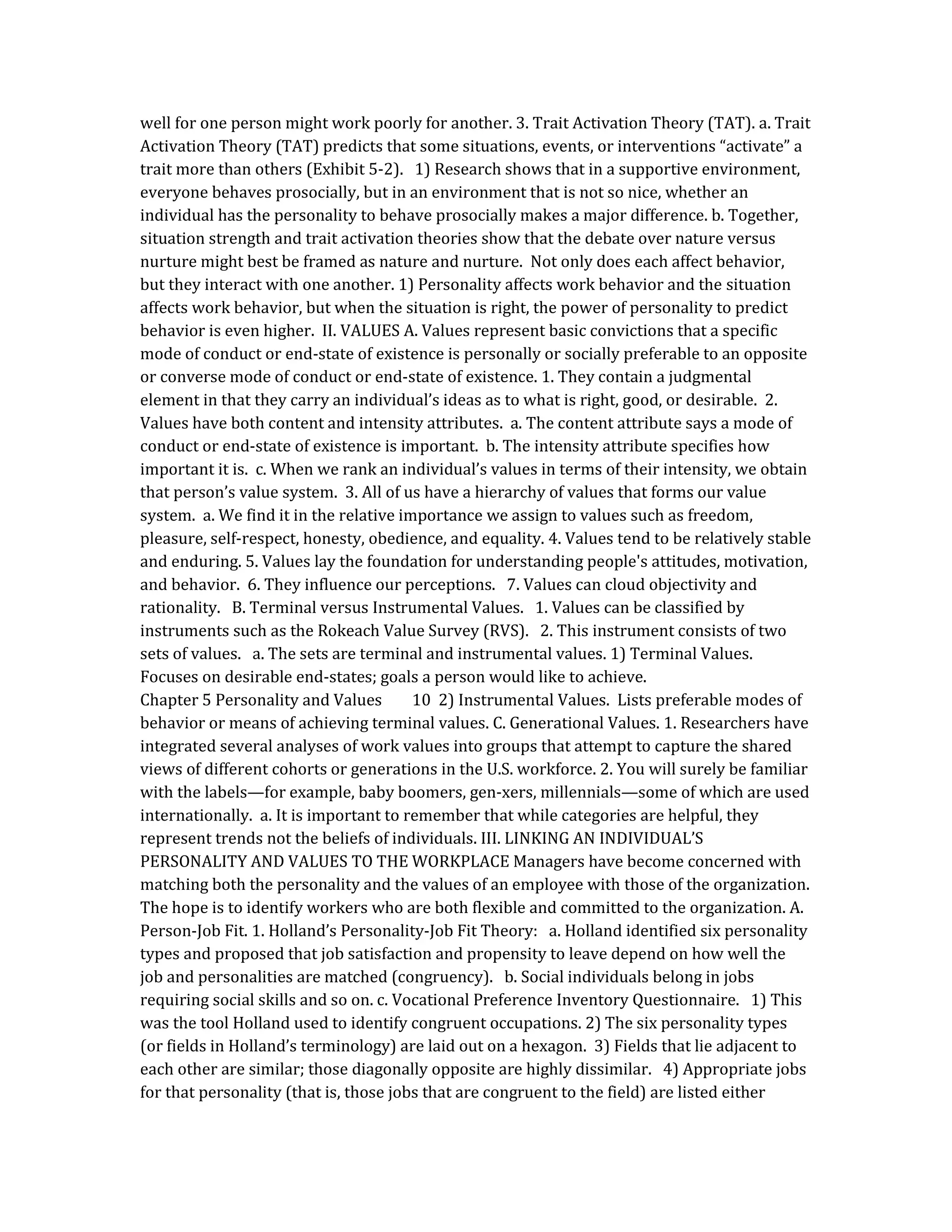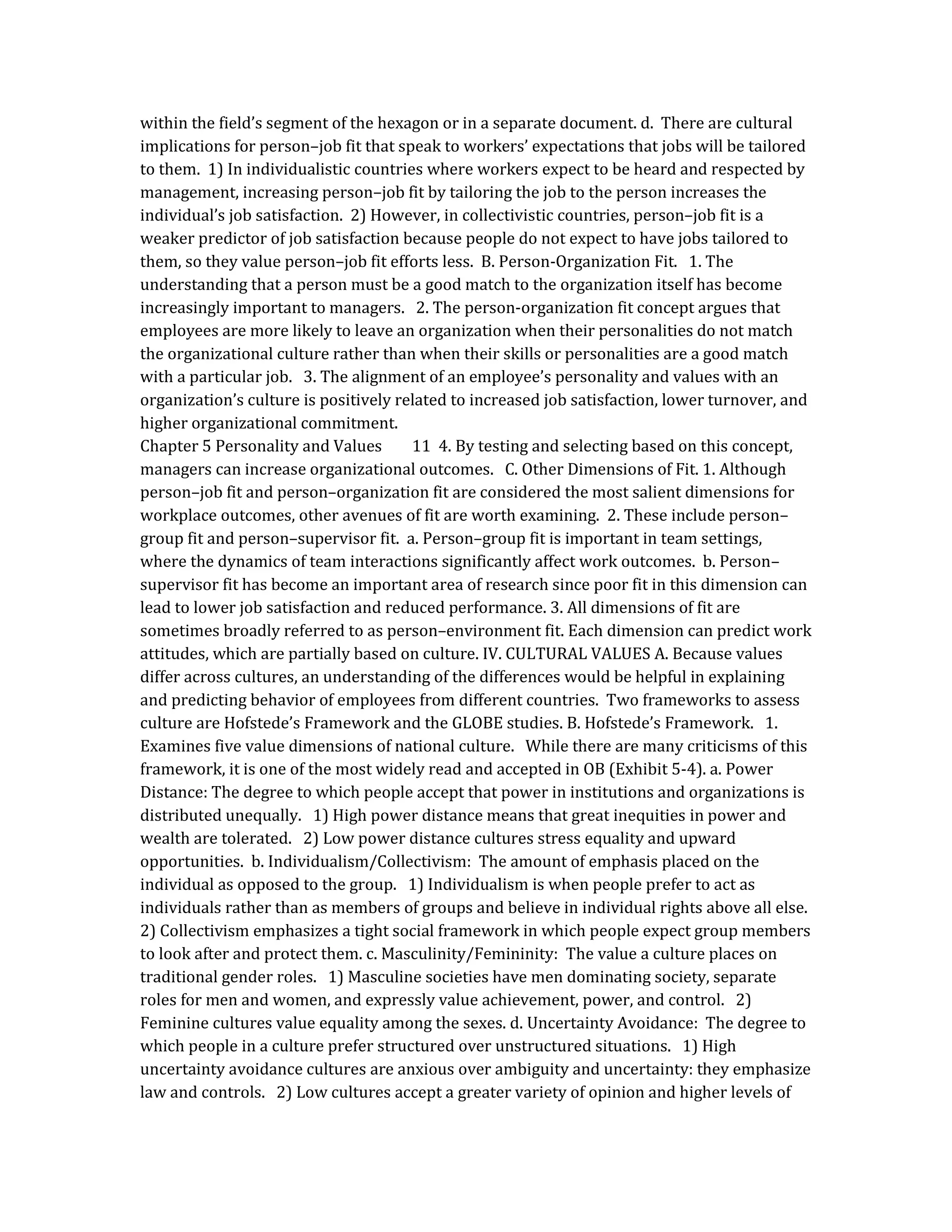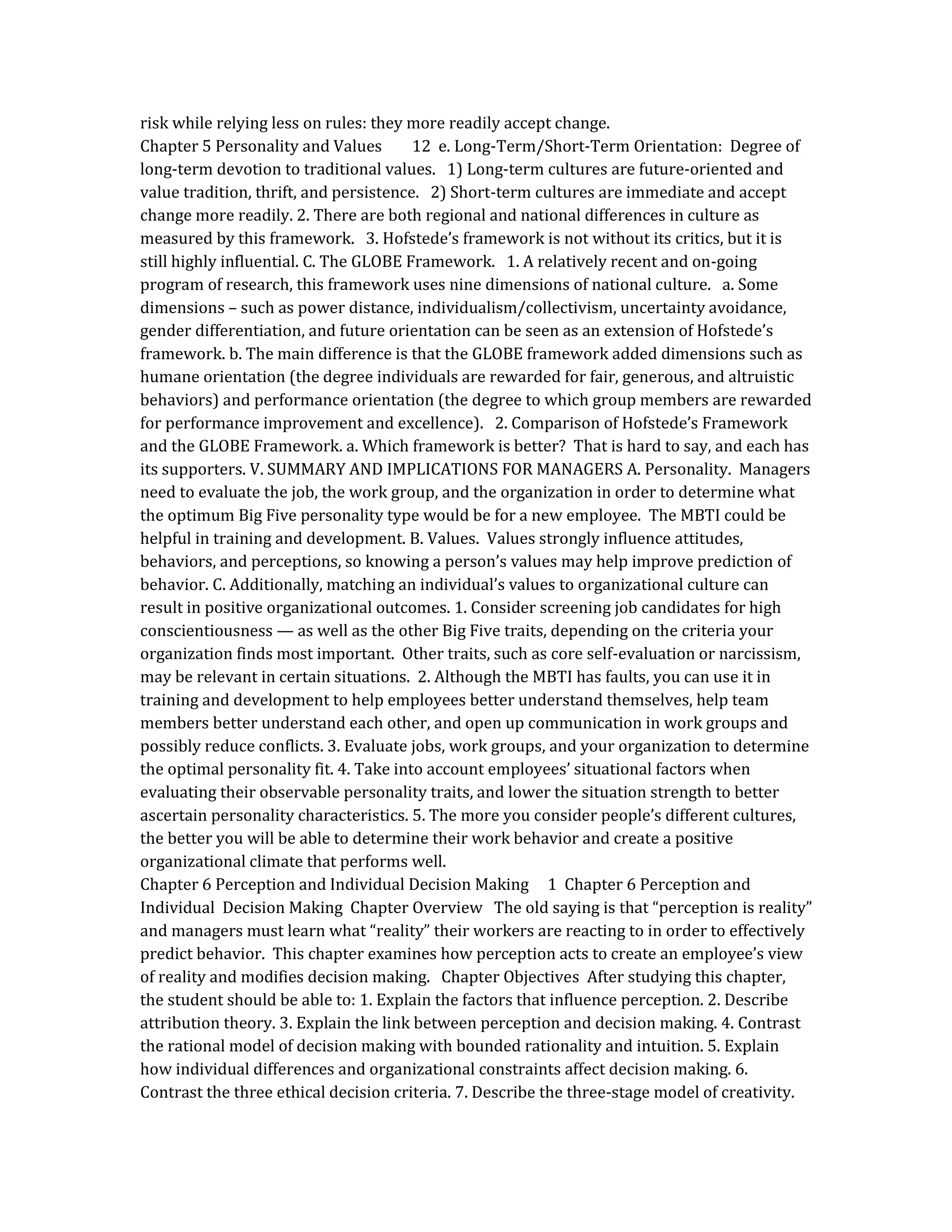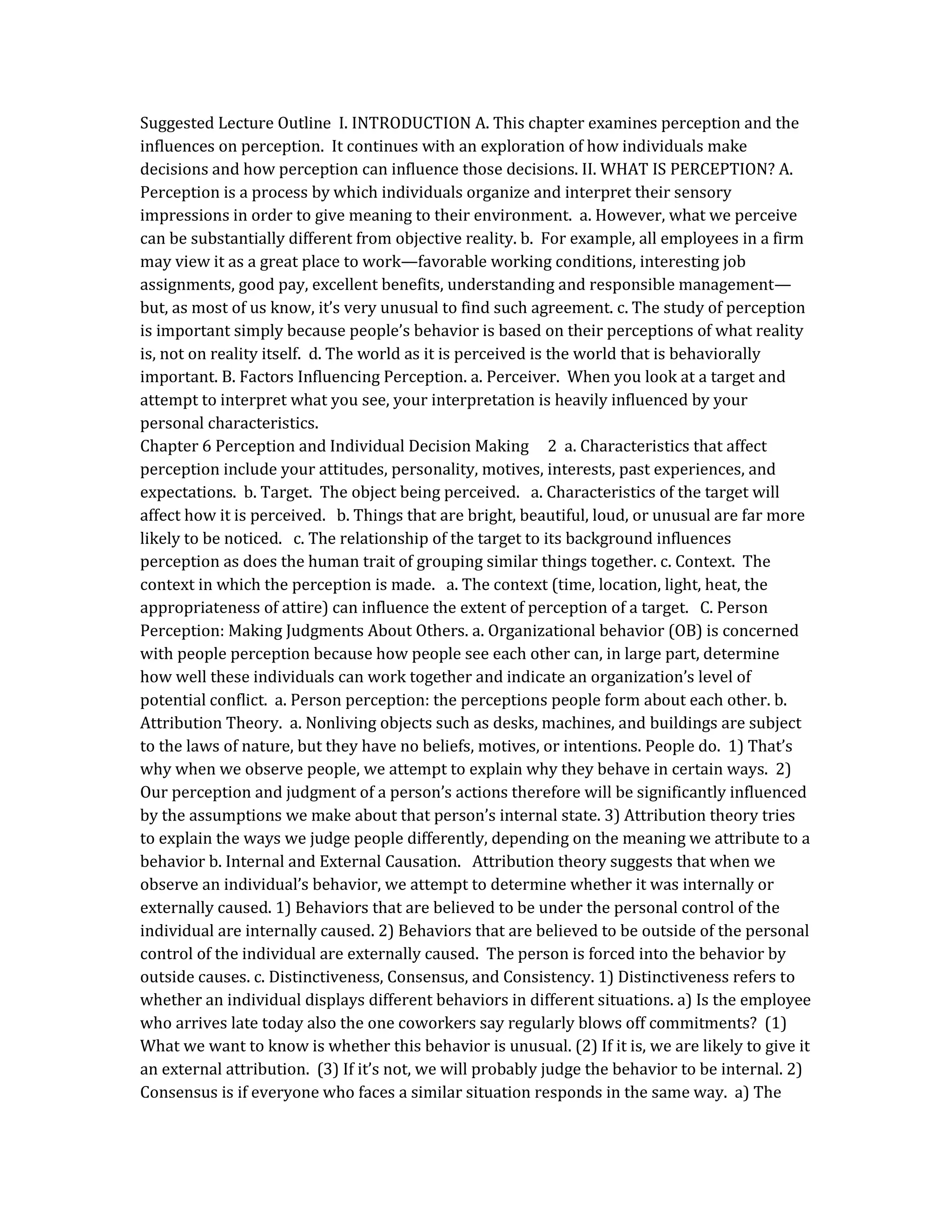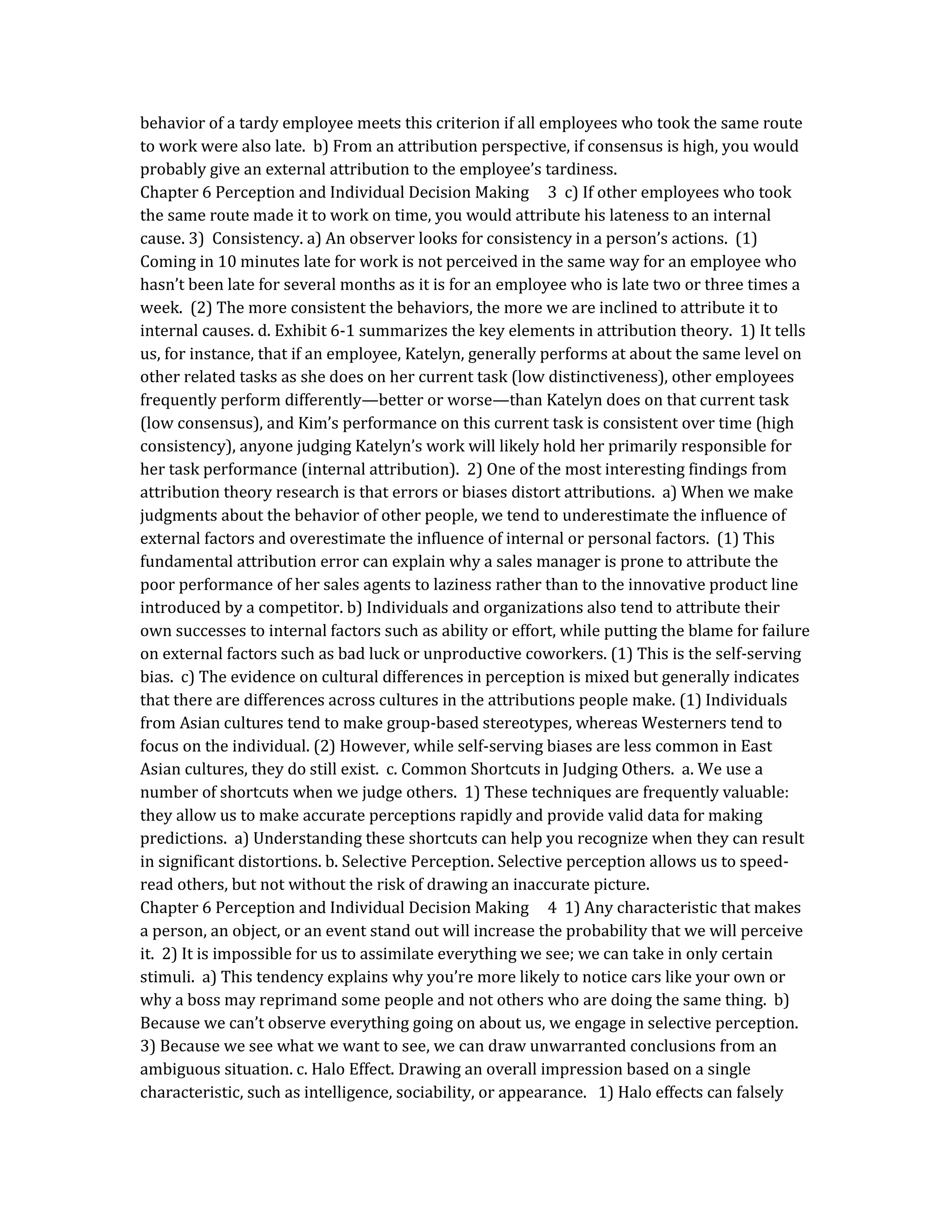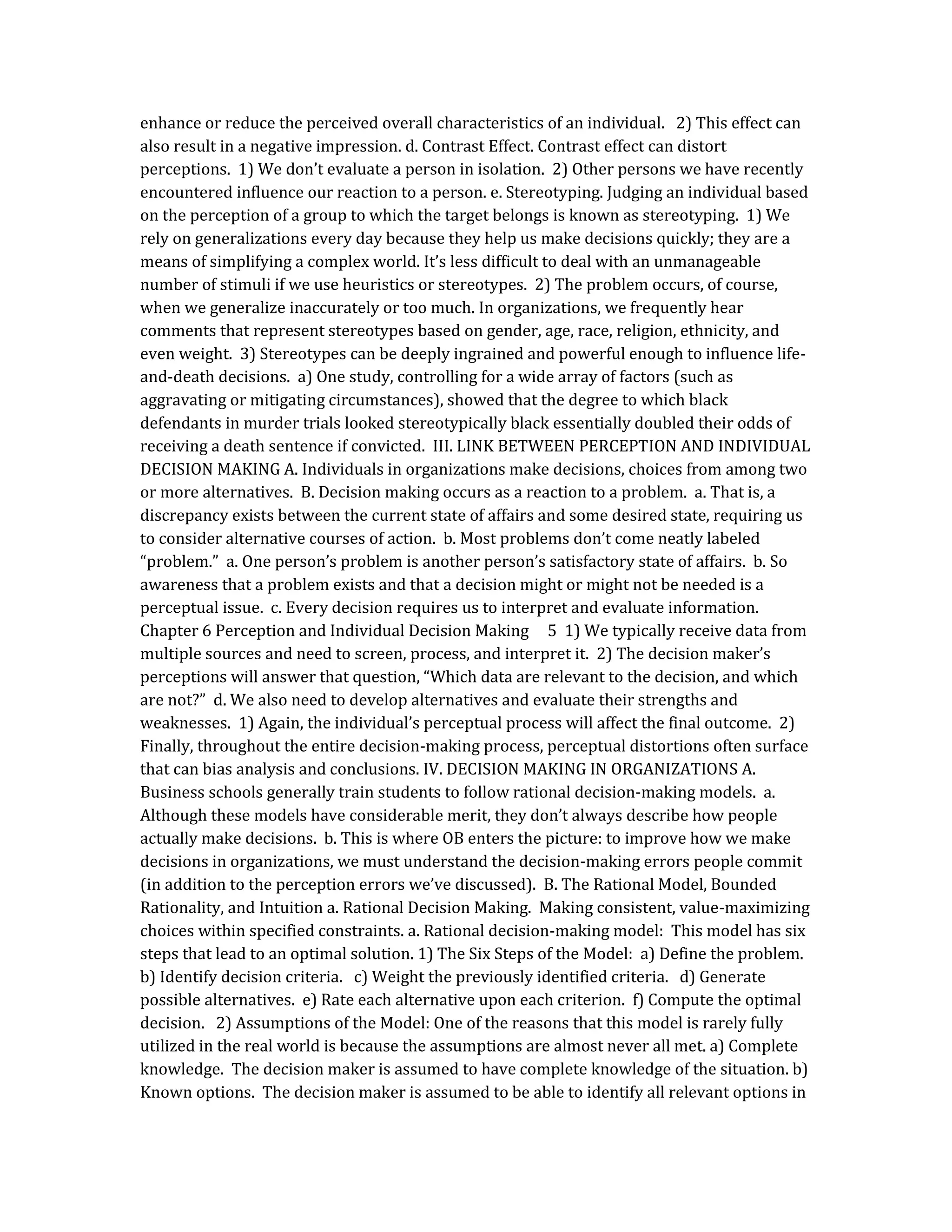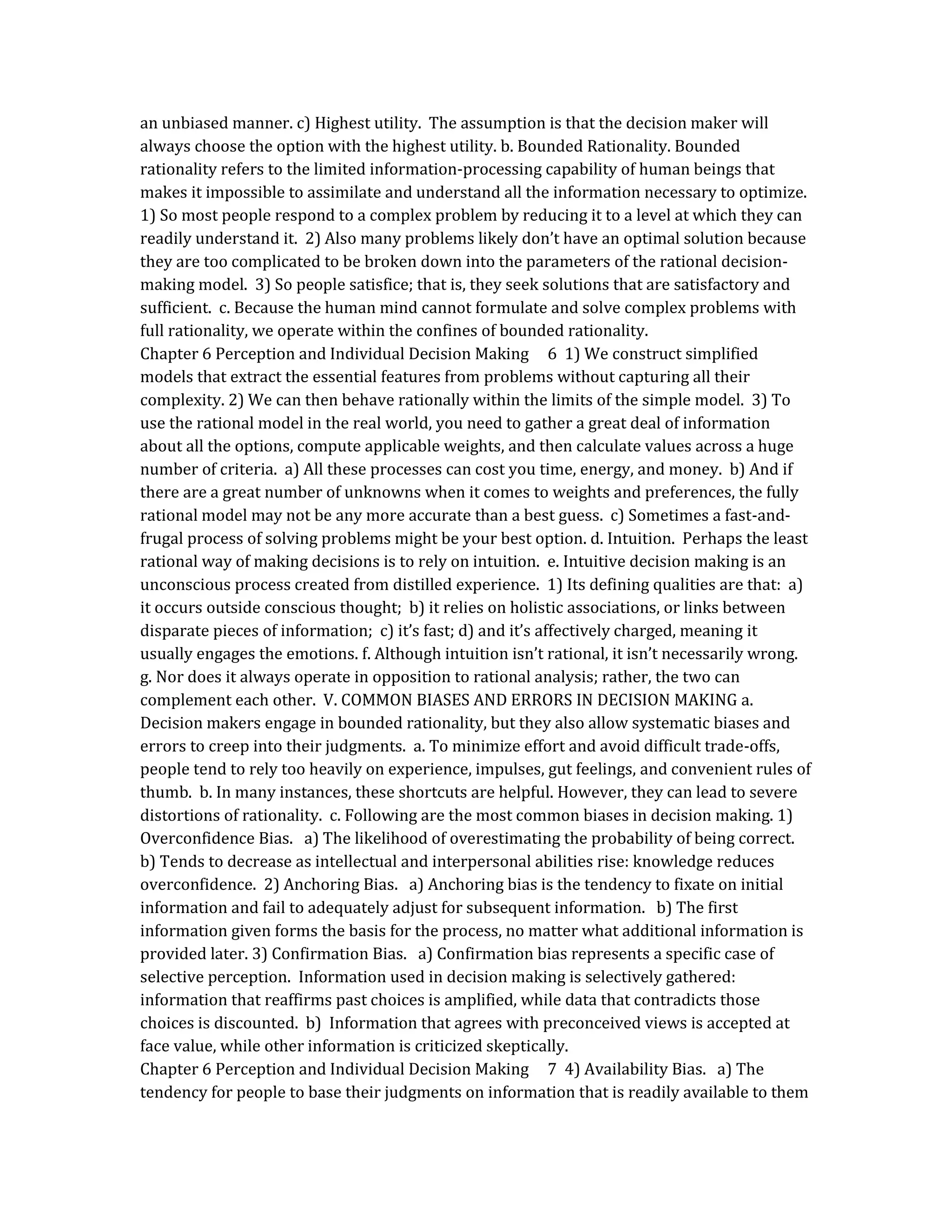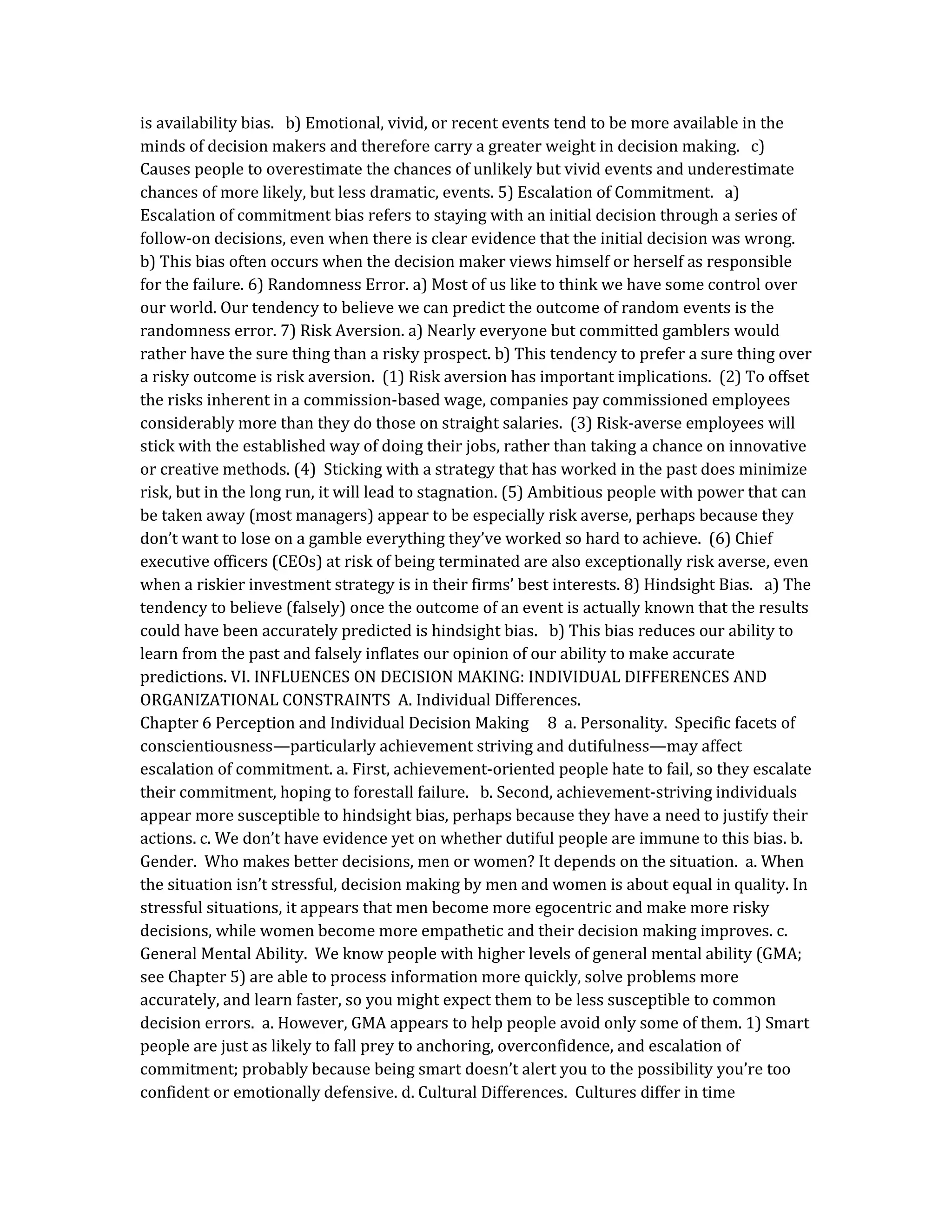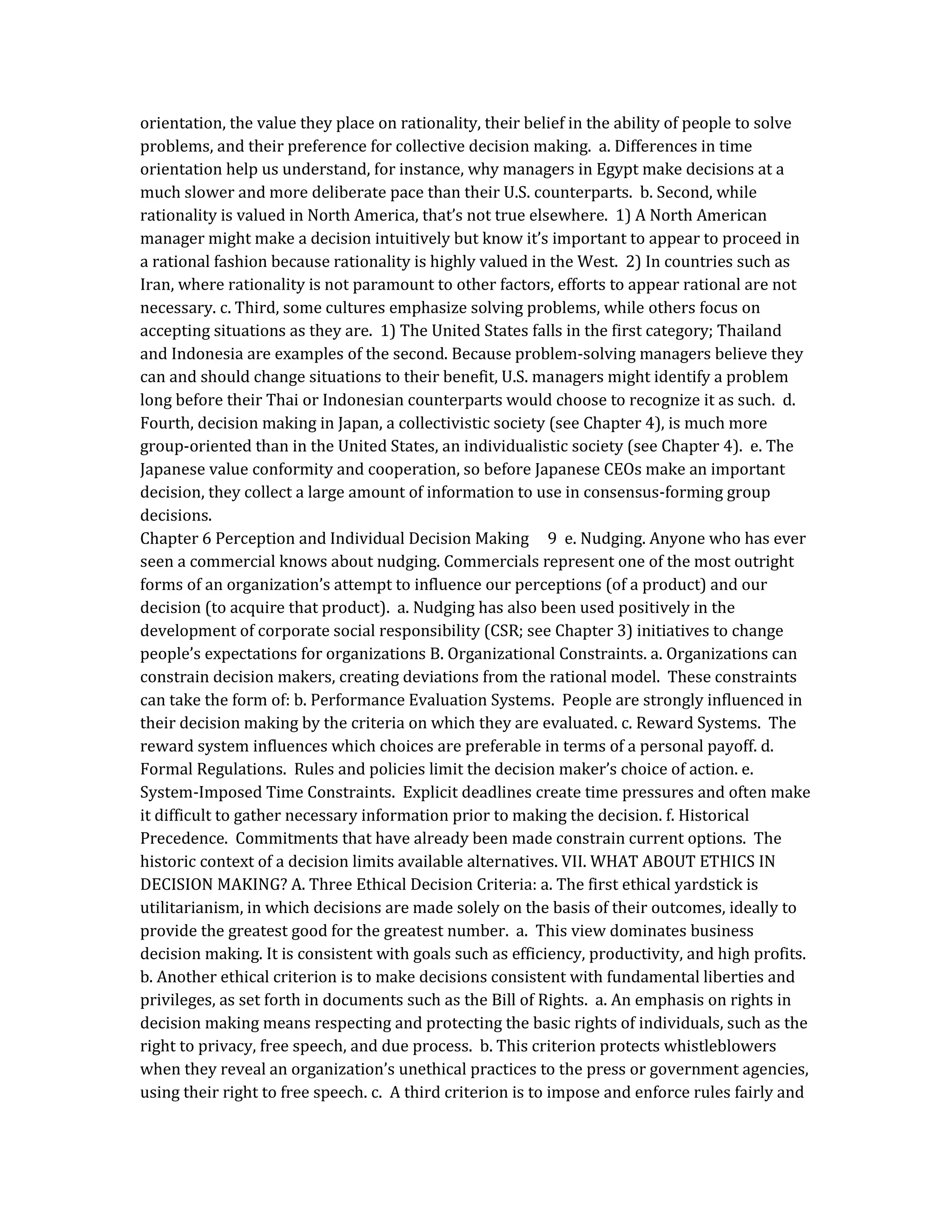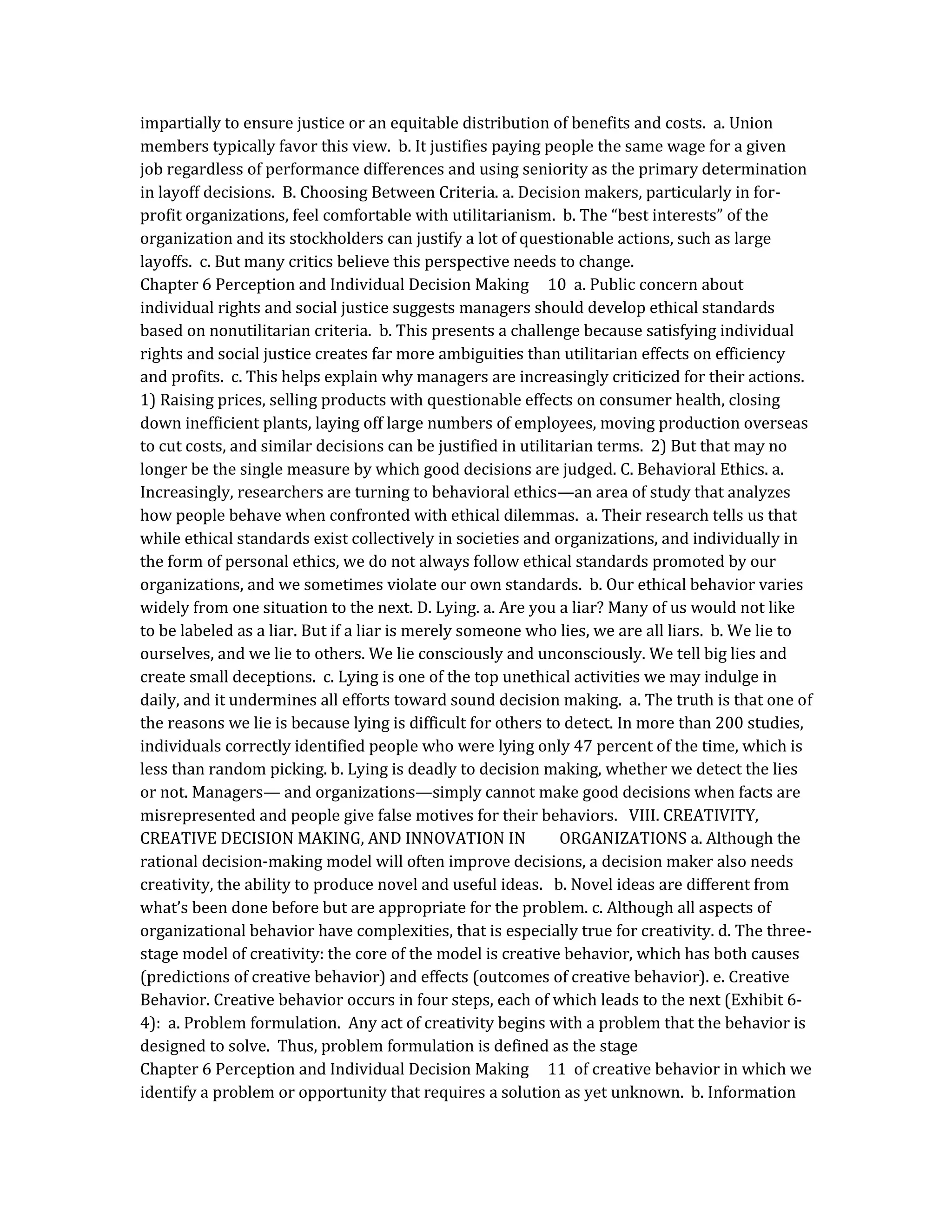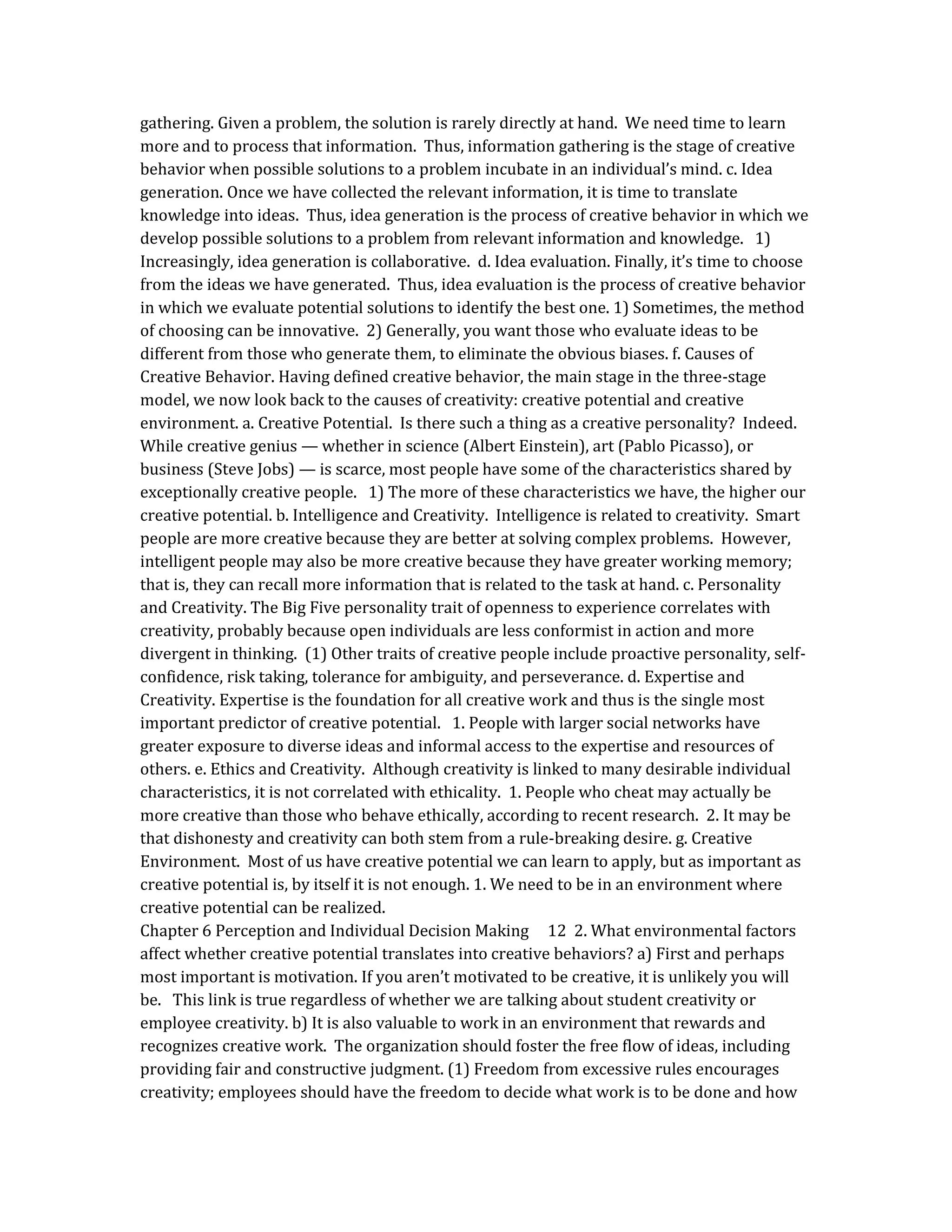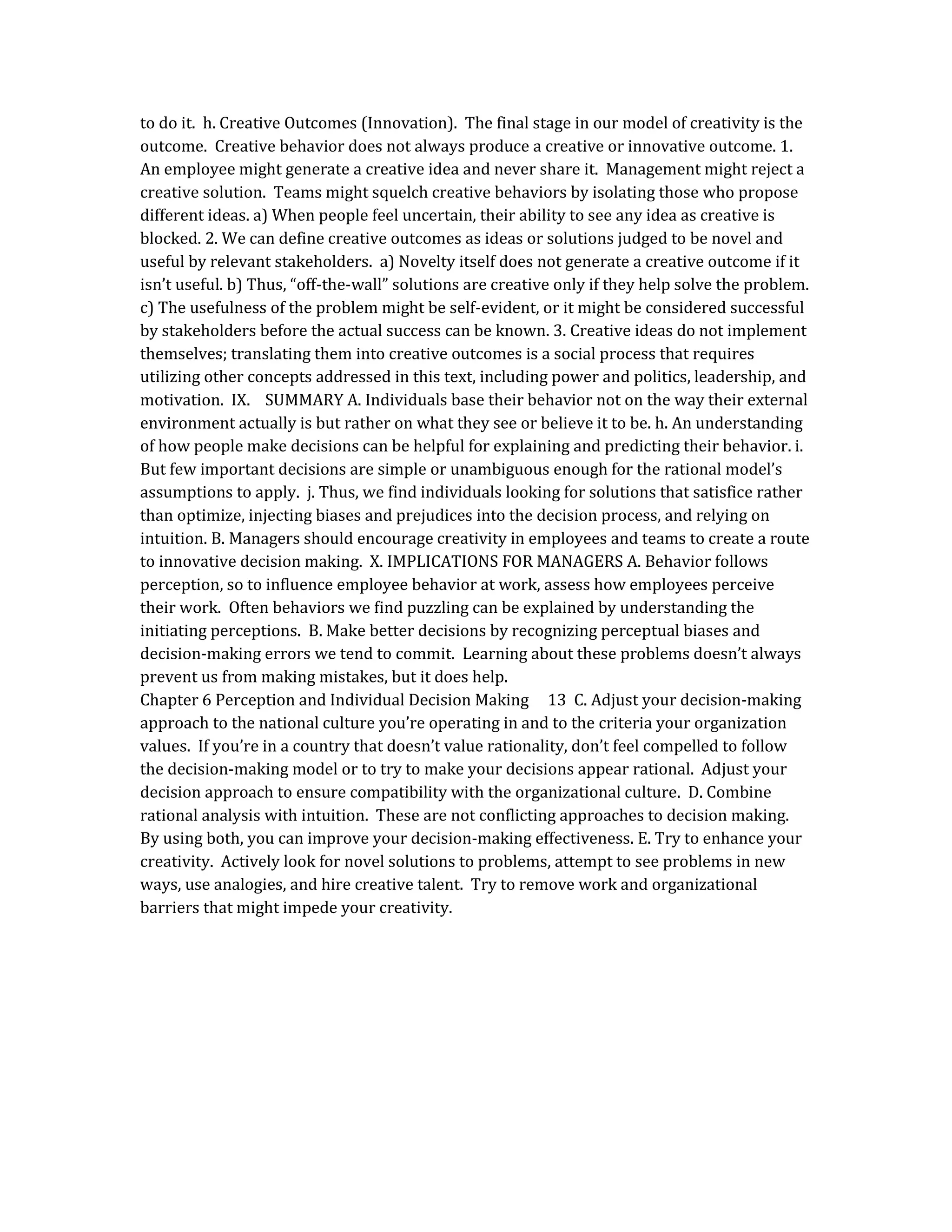This document provides an overview of personality and values as major influences on behavior. It discusses several personality frameworks including the Myers-Briggs Type Indicator and the Big Five model. The Myers-Briggs categorizes personalities into 16 types based on four scales, while the Big Five identifies five broad personality traits: extraversion, agreeableness, conscientiousness, neuroticism, and openness. The document also examines how personality traits predict workplace behaviors and performance. Finally, it introduces the "Dark Triad" of socially undesirable traits - Machiavellianism, narcissism, and psychopathy - and their implications.
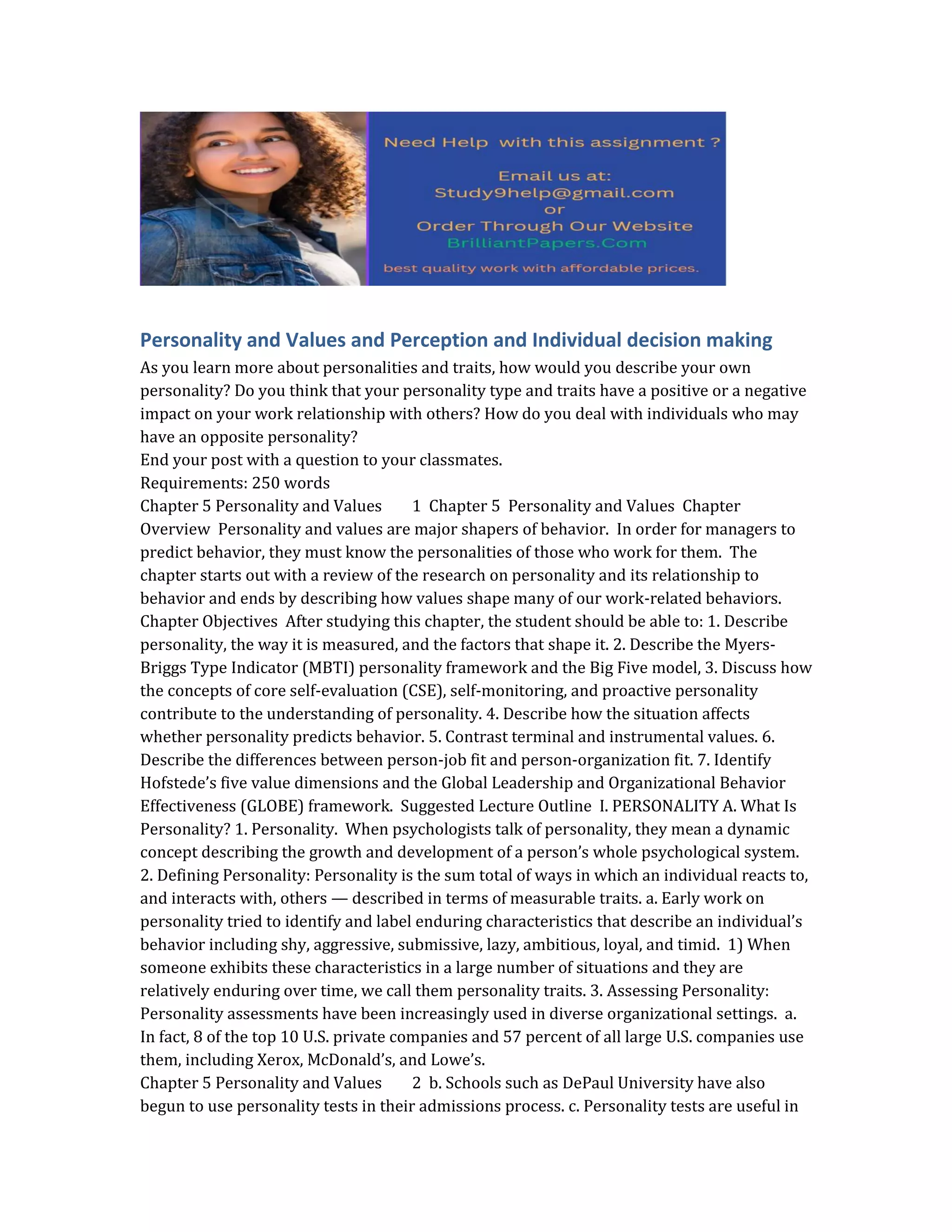
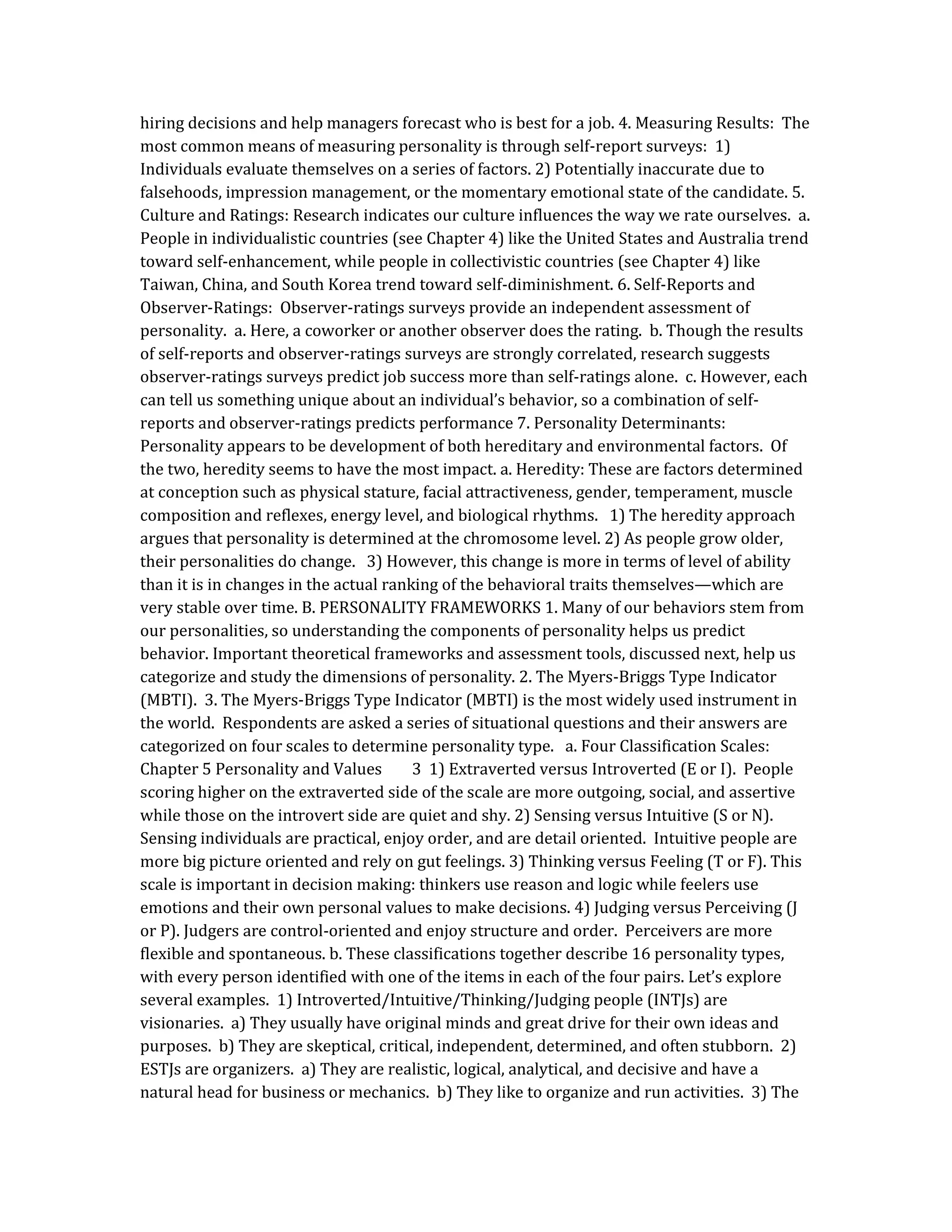
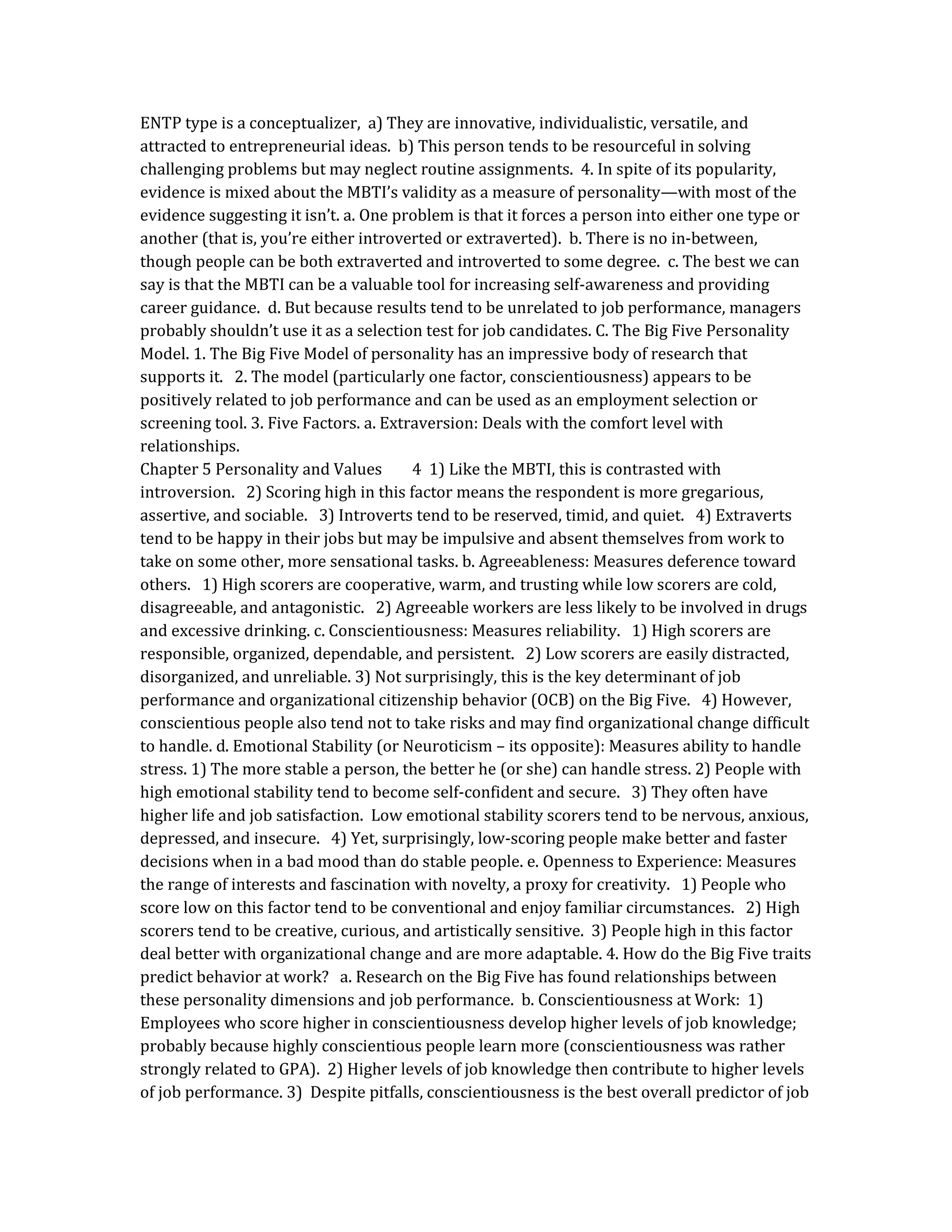
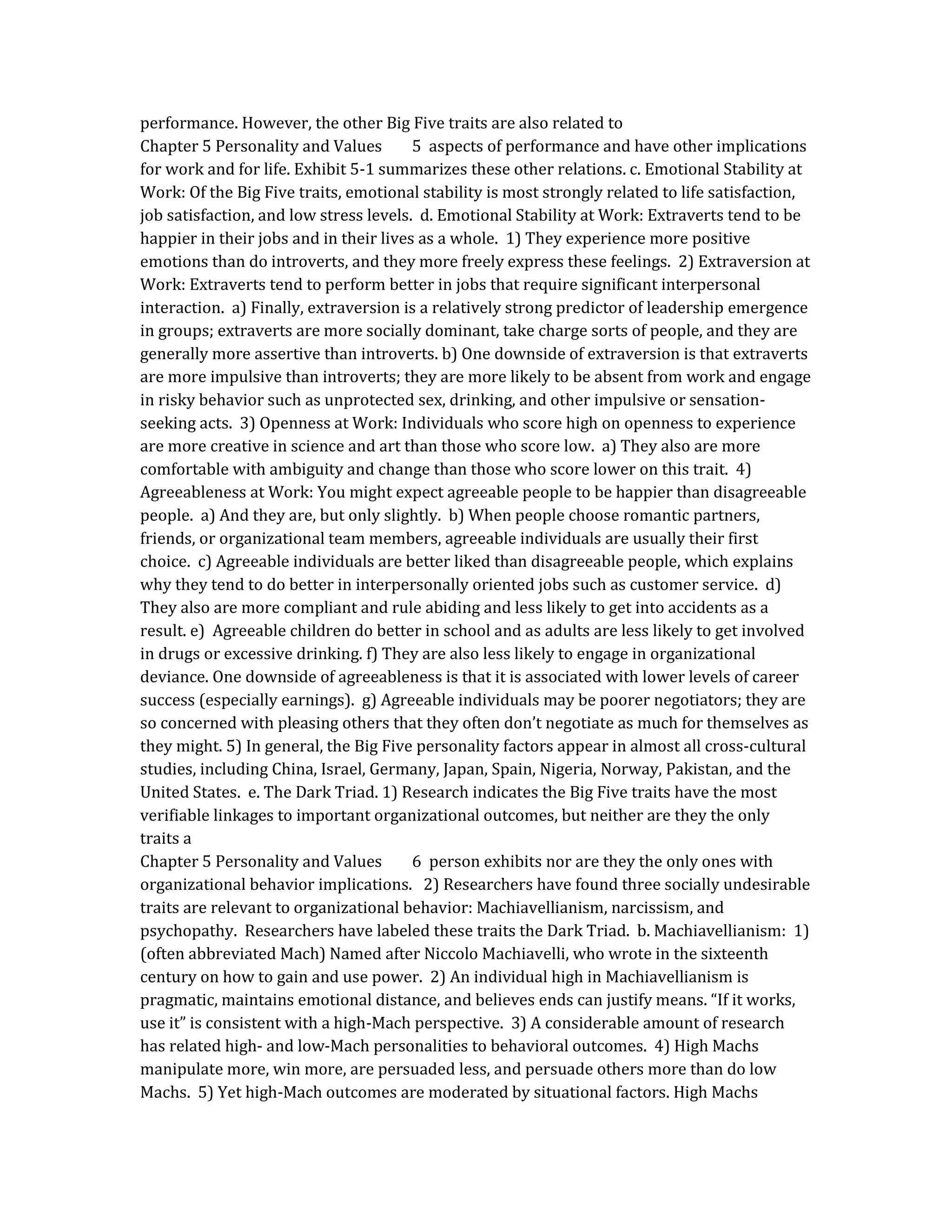
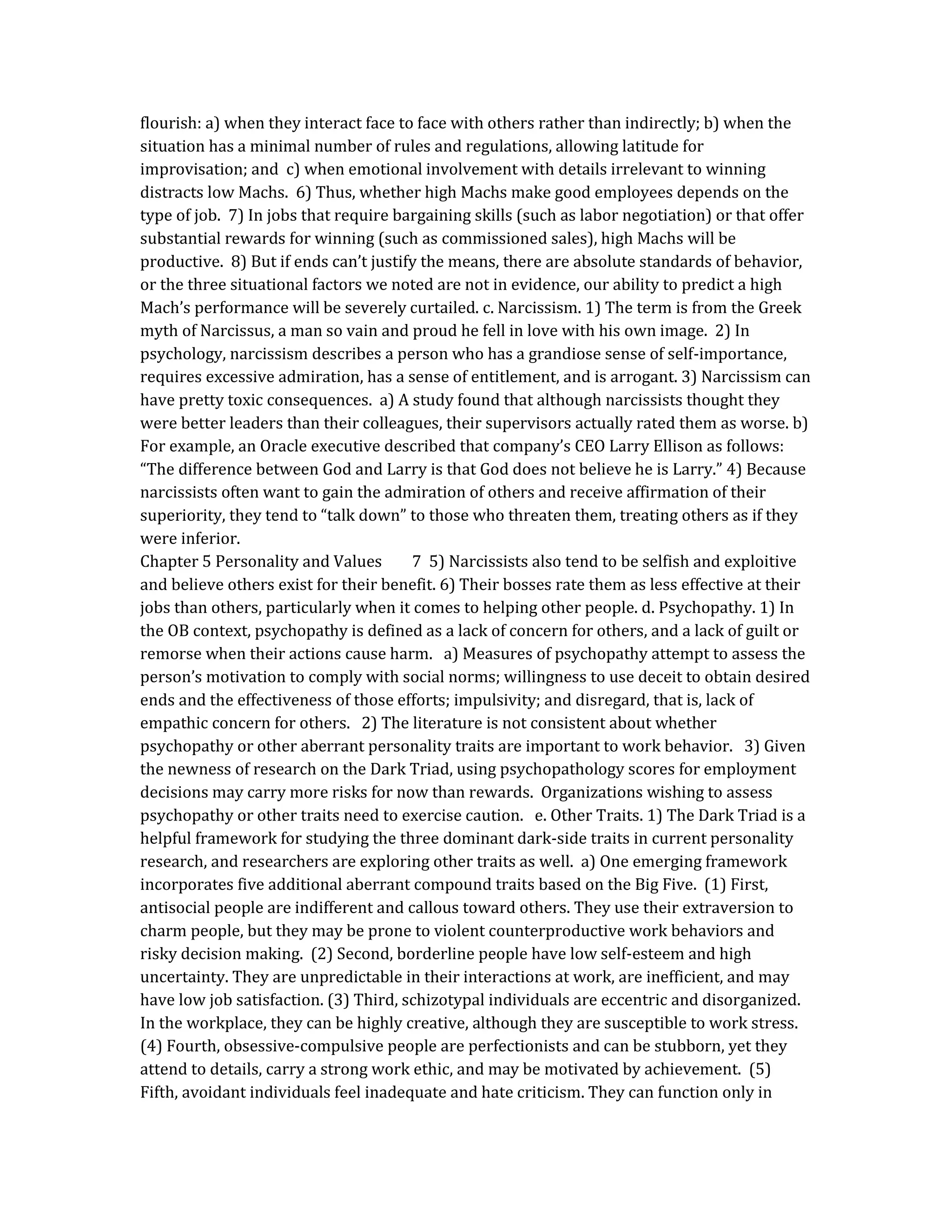
![environments requiring little interaction. E. Other Personality Traits Relevant to
organizational behavior. 1. Core Self-Evaluation. a. This is a measure of the degree to
which a person likes or dislikes him- or herself. b. Positive core self-evaluators like
themselves and see themselves as being effective, capable, and in charge of their
environment. They tend to perform better because they set ambitious goals and persist at
achieving them. c. Negative evaluators tend to dislike themselves, question their
capabilities, and view themselves as powerless over their environment. Commented [l1]:
Commented [AE2R1]: Commented [AE3R1]:
Chapter 5 Personality and Values 8 2. Self-Monitoring. a. Self-Monitoring describes the
ability of people to adjust their behaviors to fit external, situational factors. 1) High self-
monitors are very adaptable and sensitive to external cues. People with low self-monitoring
tend to have high behavioral consistency while high self-monitors can appear chameleon-
like to their coworkers. 2) High self-monitors tend to get better performance ratings, take
leadership positions, are more mobile, and take up central positions in their organizations,
even though they have less commitment to their organization. 3. Proactive Personality. a.
Individuals with proactive personalities tend to identify opportunities, show initiative, take
action, and persevere until meaningful change occurs. b. People with this personality
attribute are highly prized by organizations for obvious reasons. c. They are often leaders
or change agents and will challenge the status quo. d. Proactive people tend to have
successful careers but may not be a good match for organizations who do not value change.
F. Personality and Situations. 1. Interestingly, we are learning that the effect of particular
traits in organizational behavior depends on the situation. Two theoretical frameworks,
situation strength and trait activation, help explain how this works. 2. Situation Strength
Theory. a. Situation strength theory proposes that the way personality translates into
behavior depends on the strength of the situation. By situation strength, we mean the
degree to which norms, cues, or standards dictate appropriate behavior. 1) Strong
situations pressure us to exhibit the right behavior, clearly show us what that behavior is,
and discourage the wrong behavior. 2) In weak situation, “anything goes,” and thus, we are
freer to express our personality in our behaviors. 3) Thus, research suggests that
personality traits better predict behavior in weak situations than in strong ones. b.
Components of Situation Strength: Researchers have analyzed situation strength in
organizations in terms of four elements. 1) Clarity: the degree to which cues about work
duties and responsibilities are available and clear. 2) Consistency: the extent to which cues
regarding work duties and responsibilities are compatible with one another. 3) Constraints:
the extent to which individuals’ freedom to decide or act is limited by forces outside their
control. 4) Consequences: the degree to which decisions or actions have important
implications for the organization or its members, clients, supplies, and so on. c.
Organizational Situations: Some researchers have speculated that organizations are, by
definition, strong situations because they impose rules,
Chapter 5 Personality and Values 9 norms, and standards that govern behavior. These
constraints are usually appropriate. d. But that does not mean that it is always desirable for
organizations to create strong situations for their employees. 1) Jobs with myriad rules and
tightly controlled processes can be dull or demotivating. 2) People do differ, so what works](https://image.slidesharecdn.com/personalityandvaluesandperceptionandindividualdecisionmaking-230308015457-5c27f4f7/75/Personality-and-Values-and-Perception-and-Individual-decision-making-pdf-6-2048.jpg)
